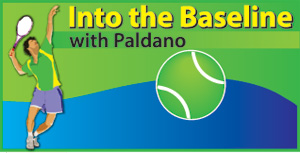Open Secrets of player development
Balkans
Right now, the eight countries of the Balkans have very strong cluster of tennis players, regularly putting out a string of world-beaters. Greece just under the Balkan states, Hungary, Czechoslovakia just above them are getting the benefit of it. Balkans cluster of tennis will dominate for a while. It started with Lendl, Ivanisevic (Djokovic’s coach), Ana Ivanovic and recently Halep and Dimitrov. The man behind Balkan tennis could be Ion Tiriac, a player, promoter and billionaire businessperson.
Notion of an elite cluster
In the 1960 and 1970s, the Australian cluster was strong and gave the world some of the well-known players. Rod Laver, Ken Rosewall, Roy Emerson, Fred Stolle, John Newcome, Roche Margret Court, Goolagong were household names. This cluster became the model.
Subsequently elite clusters surfaced in Europe and America. USA had Jimmy Connors, John McEnroe, Agassi, Chris Evert, Navratilova and good many more. Then surprisingly Scandinavians surfaced with Bjorn Borg, Mats Wilander and Stefan Edberg.
With time, the elite cluster moved down to Western European from Scandinavia. In Germany, the success of Steffi Graf and Boris Becker spread to France and Spain. (I served into this cluster working with German development, was fascinating). Monica Seles of Serbia appeared along with it. After a decade, the elite cluster went back to USA as women’s tennis. The Lindsay Davenport, Willams sisters and Sharapova. The USA cluster remains the home to many immigrant players now.
Development design
Countries pour their resources into development without successful outcome. Today, professional player associations are conducting regional events as opportunities for maturity in the form of inlet events to the top 1000 of their rankings. Participating in them, a player gains maturity and a link to good cluster players. This is happening now and this is the way to go in development. ATP and WTA need good players all the time.
 Countries, parents and players must find a sustainable method to evolve with tactical fluency and maturity. Giving players time and multiple cluster exposure from 14 years of age onwards is the best. The other factor is a coach with overseas competition tennis experience. Certified-only coaches cannot provide competition needs to players. A difficult pill to swallow but true.
Countries, parents and players must find a sustainable method to evolve with tactical fluency and maturity. Giving players time and multiple cluster exposure from 14 years of age onwards is the best. The other factor is a coach with overseas competition tennis experience. Certified-only coaches cannot provide competition needs to players. A difficult pill to swallow but true.
Player responsibility
On the part of the players and parents, they must know development possibilities to enhance success rate. Many leave this responsibility to the national associations and local academies; they are weak in this regard. Past player coaches will be conversant in this. Since it is an ever evolving area, they too must study to be on top of it.
A design must be beneficial and have upgrading possibilities. Regular elite cluster nations tour is necessary in the development design. The reminder is essential. Especially from 14 years of age, every year. Elite tennis is mainly tactical. It needs mental and physical support to win a match. When a tennis match begins, it is a very lonely place to be as a player, with only their skills to support them, a do or die situation.
Our cluster issues
In recent times, our elite players fade away after reaching top ten of our own insignificant national ranking without international cluster link. A few did spend a great deal of time and money travelling for it. The ones I saw were tactically too ordinary for ATP and WTA requirements. After the appearance of ATP and WTA, player development has better prospects but only for those with superior physical attributes with all-court-stoke-making-fluency and tactical skill; has to be acquired and not delivered.
A top one hundred player of ATP and WTA will be certified as a coach automatically by the professional bodies. Professional bodies place such importance to playing ability in a coach.
2021- Show must go on
Global tennis: Even under the cloud of the virus threat, three of the four Grand Slam events went through with spectator restrictions last year. This Year Australian Open went through with player quarantine and spectator restriction.
In the regular annual global tennis calendar, February and March are lean months for events. Both the professional bodies have put out their events calendar for 2021 in full strength. In all probability, this year’s Australian formula will the model for events until virus persists.
The next in the professional calendar is the all-important and exciting European clay court tennis season. Last year it did not take place. Europe last year did have some events. Recurrence of the virus surge is not conducive to stage events this year too. Global sports are an awaited event. This means ‘the show must go on’ attitude is bound to prevail. It is going to be wait and see situation for Europe. Current infection rate, recurrence and lock downs are not good signs.
—George Paldano, Former int. player; Accredited Coach of German Tennis Federation; National coach Brunei and Sri Lanka, coached ATP, WTA and ITF top 200 ranked players,
Davis-Cup, Federation-Cup coach. — geodano2015@gmail.com



